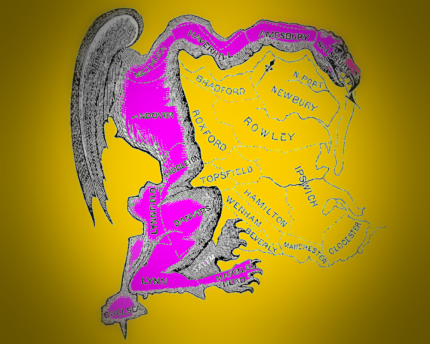A day of reckoning for gerrymandering

The background is that every voter is assigned a specific district. That district is responsible for electing public officials. In most states, these districts are drawn by the state legislature and can be approved or vetoed by the governor. But in some states, independent commissions or political commissions are involved in drawing the districts. (See a complete overview on the website of the Brennan Center for Justice at New York University School of Law.)
Gerrymandering involves drawing the districts in such a way that one party has an advantage.
In the case before the Supreme Court, for example, Wisconsin residents challenged a redistricting plan drawn by the state legislature, charging that it “enabled Republican candidates to win 60 of the (state) assembly’s 99 seats even though Democratic candidates won a majority of the statewide assembly vote.” (See the court case here.)
The case was filed in 2015, and in January a three-judge federal panel ordered the state’s legislature to redraw the boundaries by Nov. 1, 2017. The panel “declared that the state house plan adopted by Wisconsin’s Republican-controlled legislature in 2011 was an unconstitutional partisan gerrymander that violated both the Equal Protection Clause and the plaintiffs’ First Amendment freedom of association,” explains the Brennan Center for Justice website.
So where did we get the word gerrymandering? Here is the rundown:
The word: Gerrymandering is named for Elbridge Gerry (1744-1814). There are plenty of good reasons to remember Gerry. He signed the Declaration of Independence, was one of the three American statesmen involved in the XYZ Affair during the administration of John Adams, and was vice president during the administration of James Madison.
How it happened: As the governor of Massachusetts in 1812, Gerry approved a redistricting plan “designed to keep his political party in power in the upcoming election,” recounts the U.S. Library of Congress.
Did it work? Apparently so, according to the library. The plan won 29 seats for Gerry’s party, then known as the Democratic-Republican Party. The Federalist Party won 11 seats.
Salamander or gerrymander: There are different stories about who coined the word gerrymander. As told by the Library of Congress, the district map was posted on the wall at the Boston Gazette. In looking it over, an editor noticed that one of the districts was shaped like a salamander. A fellow editor decided it was a gerrymander.The American Heritage Dictionary notes that another story gives the credit to the painter Gilbert Stuart, “who noticed it on a map in a newspaper editor’s office. Stuart decorated the outline of the district with a head, wings and claws and then said to the editor, ‘That will do for a salamander.’ ‘Gerrymander,’ came the reply.”
But other sources, including the Library of Congress, note that the political cartoon of the gerrymander monster was drawn by Elkanah Tisdale for the Boston Gazette.
Today’s definition: The current definition, according to The American Heritage Dictionary, is: “To divide (a geographic area) into voting districts so as to give unfair advantage to one party in elections.”
What’s in a name: Gerry’s name was pronounced with a hard G, as in the word great. That changed over time, and today, the letter g in gerrymander is soft, like jelly.
To know more:
- The American Heritage Dictionary (Houghton Mifflin Company; 2006).
- Brennan Center for Justice at New York University School of Law: 200 years of the gerrymander.
- Brennan Center for Justice at New York University School of Law: Gill v. Whitford.
- Brennan Center for Justice at New York University School of Law: National overview of redistricting.
- Encyclopedia Britannica: Elbridge Gerry.
- U.S. Library of Congress: Elbridge Gerry and the Monstrous Gerrymander.
- U.S. Supreme Court blog: Gill v Whitford.
Related:
Presidents, vice presidents and first ladies
Quick Study: What is the Logan Act?
Quick Study: The complicated John Adams
Follow StudyHall.Rocks on Twitter.
If you would like to comment, give us a shout, or like us on Facebook and tell us what you think.

